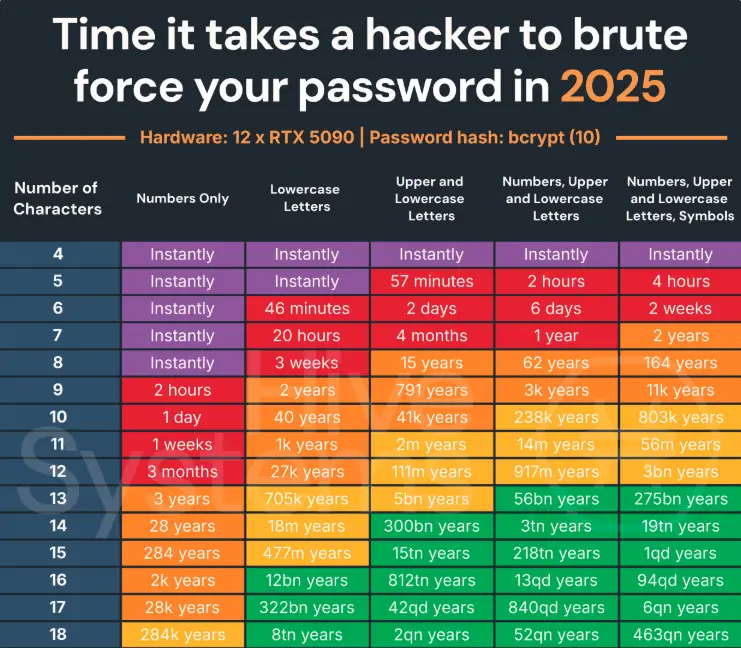
In recent years, account breaches via brute-force attacks have become significantly easier—not solely due to the exponential rise in computing power, but also because of the widespread deployment of artificial intelligence. Combinations once deemed secure are now cracked within minutes—or even in mere seconds.
The team at Hive Systems has released an updated password cracking time chart, vividly illustrating how the time required to brute-force a password diminishes based on the length and complexity of the string.
For instance, passwords consisting of just four to eight digits can be compromised in fractions of a second. The same holds true for short passwords made solely of lowercase letters. Even five-character Latin alphabet combinations no longer pose a challenge to attackers.
More time is required to crack lengthy, complex passwords. Strings ranging from 14 to 18 characters that include numbers, uppercase and lowercase letters, and special symbols may remain impervious to brute-force attacks for billions—or even trillions—of years, provided that the attack is carried out “blindly,” without any prior knowledge. This is the scenario modeled by Hive Systems: a case in which the attacker has no prior data and must compute the hash from scratch.
However, such isolated scenarios are rare in practice. Experts warn that today’s attackers possess a far more sophisticated arsenal: rainbow tables, dictionary-based attacks, and vast databases of previously leaked hashes. These tools dramatically accelerate the cracking process and allow cybercriminals to circumvent conventional defenses. Passwords that have already been compromised, contain common words, or are reused across multiple sites are especially vulnerable.
Statistics from Cloudflare underscore the severity of the issue. According to their data, 41% of users continue to input previously breached passwords when logging into email, social media, and other online services. Even in the wake of large-scale leaks, many fail to change their credentials—or merely adopt slight variations of them. In such cases, the question is not whether an attack might occur, but when it will inevitably succeed.
True security can only be achieved by adhering to a few key principles: using long, unique passwords for every service; avoiding predictable, templated combinations; and enabling multi-factor authentication without exception. Dedicated password managers can assist in maintaining this discipline by securely storing and auto-filling credentials, thus minimizing the risk of reuse.
Hive Systems’ chart makes one fact abundantly clear: only long and complex passwords incorporating all character types can withstand the onslaught of today’s advanced cracking methods. Yet even the strongest password remains exposed if not bolstered by additional layers of defense.


